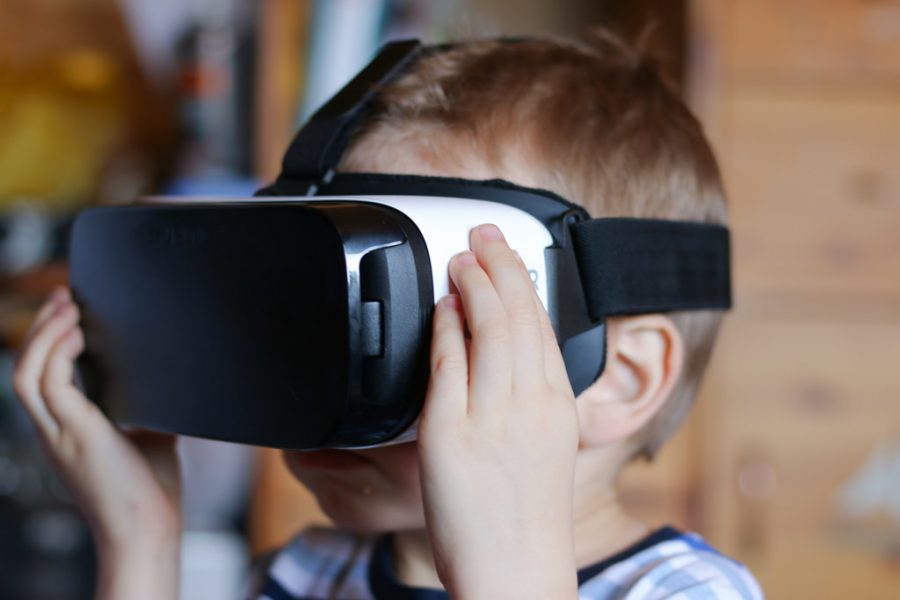FAU professor uses virtual reality to ease children’s fear of needles
From flying in a helicopter to riding a roller coaster, the brain-tricking effects of virtual reality can help decrease pain.
August 20, 2018
Children normally hate going to see their pediatrician because of regular shots, but now they can go through it while riding a hot air balloon or watching a video with the help of a virtual reality (VR) headset — minus the screaming and tears.
Two years ago, FAU professor Chad Rudnick was working out of private children’s clinic Boca VIPediatrics when a child came in for his annual flu shot. The child was nine years old and never took shots well.
When Rudnick came in that day, the child brought a VR headset, and he asked the patient if he would like to watch something while administering the shot. So he put on a movie, fully immersed in the 3D world.
When Rudnick gave him the shot, he didn’t even flinch.
The following week, another child came by who was on the autism spectrum and also afraid of shots. Rudnick’s team gave her a VR headset simulating a helicopter ride, and saw the same result — the child didn’t notice the shot. Her mother recorded it and posted the video on Facebook, where it was shared more than 1,500 times.
After the second time, Rudnick decided it was time to do a study.
The study consisted of 17 children and 17 parents who were all given vaccinated shots. The subjects would rate the amount of fear or pain they anticipated during a regular shot, and then compare that to how they actually felt after being vaccinated with a VR headset on.
It took about six months to conduct the study, which would later be published in the “Pain Management” medical journal. 94 percent of the subjects had reduced fear and pain while wearing the headset during the shot.
“Take away the anxiety, fear, and pain from getting a shot and it makes it a better place for children and parents,” Rudnick said about the findings.
VR works because a person’s entire peripheral vision is enclosed in the headset. It moves with you as you look around, essentially making it the world you’re in. That helps trick the brain into ignoring the shot’s painful prick, Rudnick said.
“I never thought [virtual reality] would be used in the medical world. You think of it as something teenagers play with in video games. It’s a serendipitous finding,” President of VIPediatrics Ashley Rudnick said.
Although VR has been known to reduce pain in the past, this is the first time it has been applied to pediatric immunizations, said VR Focus.
Generally, having one headset in the office would only cost around $30-$60.
VIPediatrics hopes that more children’s clinics will use this as a distraction tool for patients so children — or anybody else — will not have to fear shots.
“Why not try to take pain away and not have to use medication for pain … if you could use less of those and use some other stimulus like virtual reality?” Rudnick said.
Amber Kelley is a contributing writer with the University Press. For information regarding this or other stories, email [email protected].






